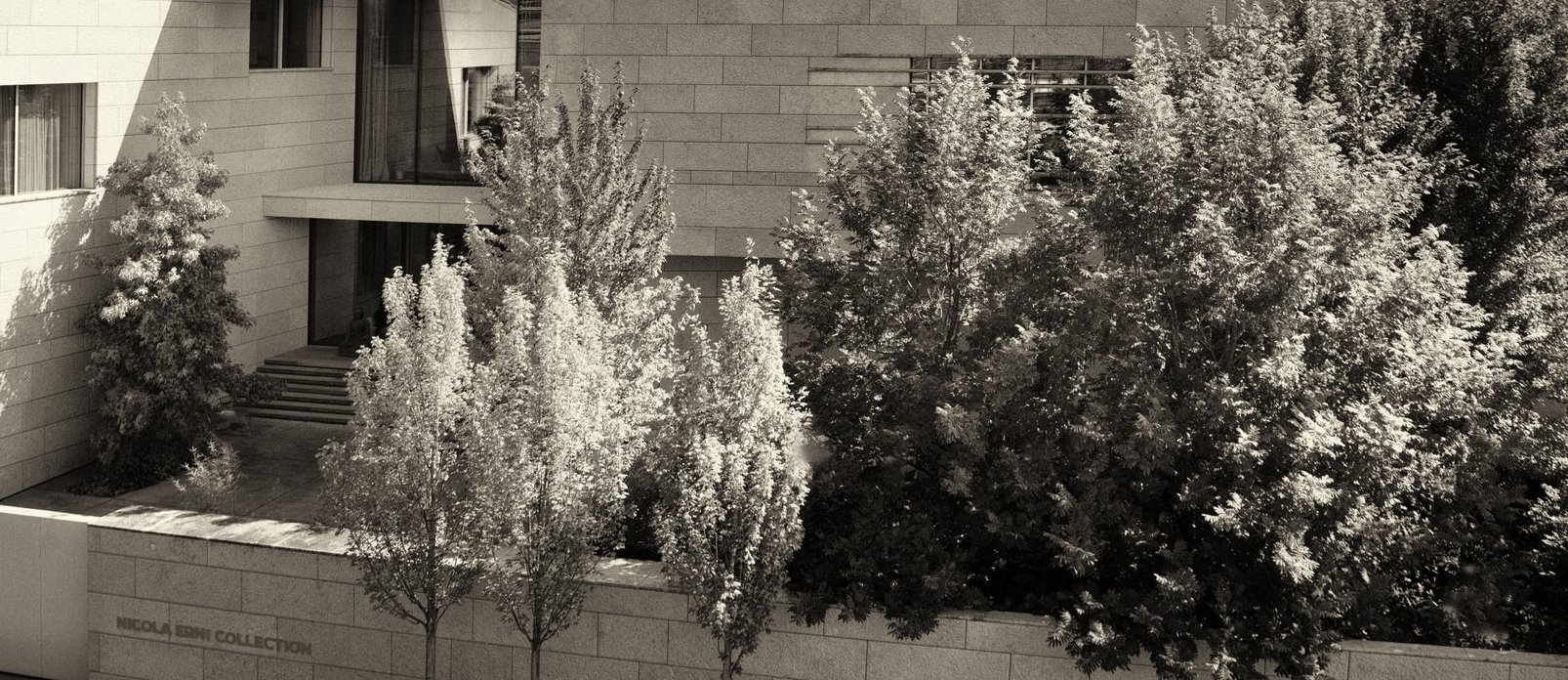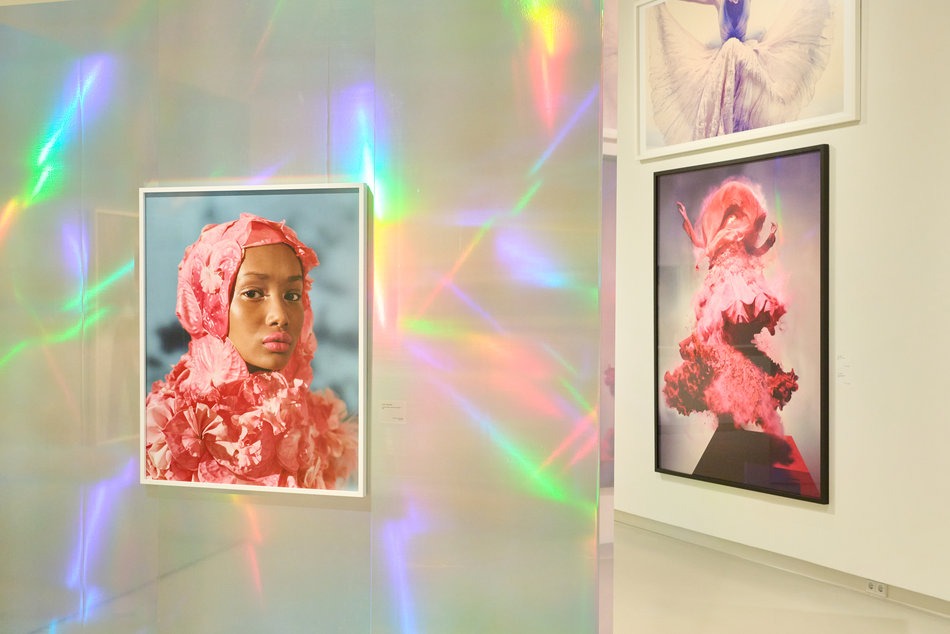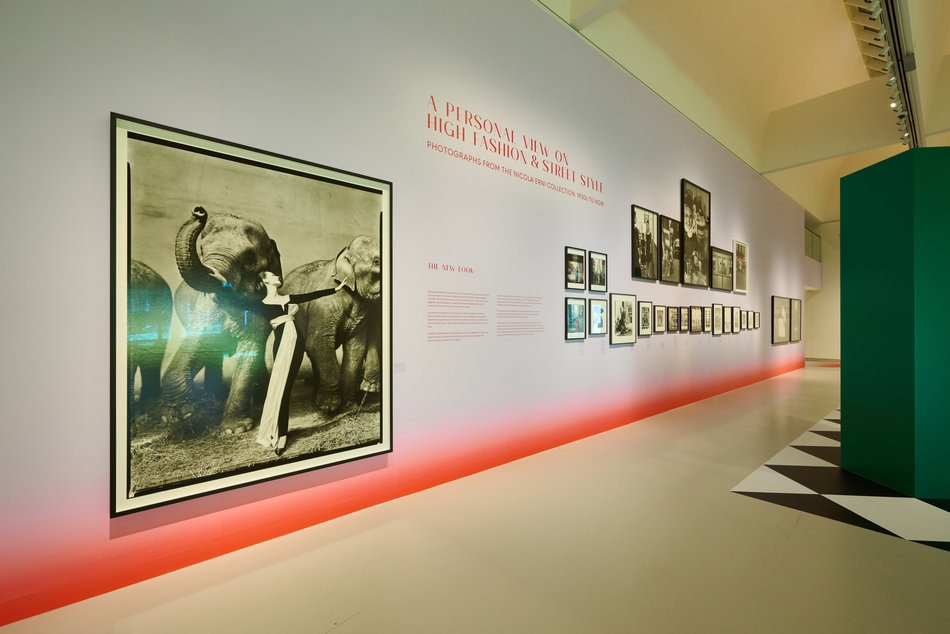2015
The second exhibition in the Nicola Erni Collection further emphasized its two main collecting strands: Photography with a special focus on Fashion Photography and Contemporary Art, shining a spotlight on Jean-Michel Basquiat.
On view were thus fashion photographs by Ruven Afanador, Peter Lindbergh, Irving Penn, Paolo Roversi and David Seidner, paintings by Jean-Michel Basquiat and Julian Schnabel as well as installations by Elmgreen & Dragset.
Artists
Ruven Afanador
Photographer. Born 1959 in Bucaramanga, Colombia.
Lives and works in New York.
Ruven Afanador grew up Colombia, before moving to Michigan, USA at age 14. He later moved to Washington DC, went on to Milan and in 1990 settled in New York. Thanks to his Colombian origins, Afanador has a strong sense of colour, texture and fabric and indeed his lyrical and sensual photographs speak of bold emotions, refined elegance and are a lavish feast for the eye.
His work has appeared in Vanity Fair, The New York Times Magazine, Vogue, Harper’s Bazaar and Elle and advertising campaigns range from Yves Saint-Laurent to Moschino, Hugo Boss and Guerlain to Bergdorf Goodman.
Jean-Michel Basquiat
Painter. Born 1960 in New York. Died 1988 in New York.
Jean-Michel Basquiat arrived at painting from the graffiti and hip hop scene. Within eight years he created an oeuvre as fascinating as it is complex. The art-historical canonisation of Basquiat’s works is as diverse as the interpretation of them is subjective. Basquiat was very receptive and well-read and alongside autobiographical references he incorporated into his art his vast knowledge: of the streets; of historical, sociocultural and art-historical erudition; of literature, music, comics, symbols, and visual references from TV and mass media.
Elmgreen & Dragset
Artist Duo. Michael Elmgreen: Born 1961 in Copenhagen, Denmark. Ingar Dragset: Born 1969 in Trondheim, Norway. Live and work in Berlin.
The artist duo has been working together since 1995 and examines objects in their historic, political, cultural and sociological context, questions the status-quo and re-contextualizes. By doing that, Elmgreen & Dragset walk the line between art and architecture, between installation and performance.
In 2003 they won the competition of the German federal government for a “Memorial for homosexuals persecuted under National Socialism”. Their international breakthrough came with “Prada Marfa” in 2005. The installation “The Collectors” was their contribution for the adjacent Danish and Nordic pavilions at the 53rd Venice Biennale in 2009. Since 1997 they have exhibited regularly in key international museums.
Peter Lindbergh
Photographer. Born 1944 in Leszno, Poland. Died 2019 in Paris.
Peter Lindbergh spent most of his childhood in Duisburg, Germany. In the early 1960’s he studied at the Berlin Academy of Fine Arts and worked as a window dresser for a department store. Thereupon he started working as an assistant to the German photographer Hans Lux, during which time Lindbergh found his interest in fashion photography.
With his visionary approach and signature matter-of-factly, elegant, emotive and cinematic aesthetic, typically shot in black and white, he not only captured the model’s and his sitter’s beauty but also their personalities. Furthermore, he one of the first photographers to incorporate storylines into his fashion shoots.
Lindbergh had moved to Paris in 1978 and started working for Vogue, shooting for the Italian, English, French, German and American editions and in the years to come worked for most of the important fashion magazines. His works are part of the permanent collections of many art museums around the world and have been shown in prestigious museums and galleries. In both 1995 and 1997, he was named Best Photographer at the International Fashion Awards in Paris. In 2005, he was awarded the Lucie Award for Outstanding Achievement in Fashion Photography.
Irving Penn
Photographer. Born 1917 in Plainfield, USA. Died 2009 in New York.
Irving Penn studied art and design under the highly influential Alexey Brodovitch at the Philadelphia Museum School of Industrial Art. Penn then went on to assist Brodovitch as Art Director at Harper’s Bazaar before being hired by Alexander Liberman, the newly appointed Art Director at Vogue in 1943. He photographed for Vogue and commercial clients in America and abroad for nearly 70 years.
At a time when photography was primarily understood as a means of communication, Penn approached it with an artist’s eye and expanded the creative potential of the medium, both in his professional and personal work. Penn’s trademark style is that of an elegant aesthetic simplicity and he is known for both his arresting images as well as masterful printmaking. The first retrospective of Penn’s work was organized by the Museum of Modern Art in New York in 1984 already. Penn himself founded The Irving Penn Foundation during his lifetime.
Paolo Roversi
Photographer. Born 1947 in Ravenna, Italy. Lives and works in Paris.
Paolo Roversi’s interest in photography came about during a family holiday in Spain, which led him to spend all his free time teaching himself about his newfound passion. In 1971 he met Swiss Peter Knapp, the then Art Director of Elle magazine, by chance, in Ravenna. At Knapp’s invitation, Roversi visited Paris in November 1973 and has never left. In 1974 Roversi became assistant to the British photographer Laurence Sackman and thereupon embarked on small jobs for Elle and Marie-Claire.
Roversi is known for shooting with 8×10 Polaroid film, and claimed to buy as much as he could find before it was discontinued. His minimalistic approach to portraiture and beautifully haunting, unguarded shots counteract the fashion industry’s tendency to reveal and retouch. Roversi’s list of credits runs from shoots for Vogue and Harper’s Bazaar to advertising campaigns for Romeo Gigli, Comme des Garçons and Yoji Yamamoto.
Julian Schnabel
Julian Schnabel (American, b. 1951) lives and works between New York and Montauk (Long Island).
Schnabel studied art at the University of Houston (1969–73) and attended an Independent Study Programme at Whitney Museum of American Art (1973–74). After a first stay in Italy in 1977, Schnabel paid another visit to Europe a year later and was particularly inspired by the architecture of Antoni Gaudí in Spain. The idea for his renowened large-format paintings made with broken ceramic plates has its roots in that very first trip to Barcelona. Beside the so-called “plate paintings”, Schnabel experiments with a vast rage of materials and substrates to create his monumental works.
David Seidner
Photographer, Born 1957 in Los Angeles. Died 1999 in Miami.
David Seidner is best known for his inventive and elegant fashion photographs as well as formal portraits and general infatuation with art history. He moved to Paris at the age of 17 and landed his first cover by the age of 19. In the 1980s he was working exclusively for Yves Saint Laurent, however, his commercial work also included campaigns for Dior, Lanvin etc. and he regularly contributed to Vogue, Harper’s Bazaar, The New York Times Magazine and Vanity Fair. In addition to his advertising and editorial fashion work, Seidner also pursued other projects dealing with clothing, the body, and art. He photographed the miniature war-time couture dolls for an exhibition at the Musée de la Mode in Paris and in the 1990s spent eight years photographing the studios of well-known contemporary artists including Louise Bourgeois, Chuck Close, Brice Marden, Richard Serra, and Cindy Sherman.




